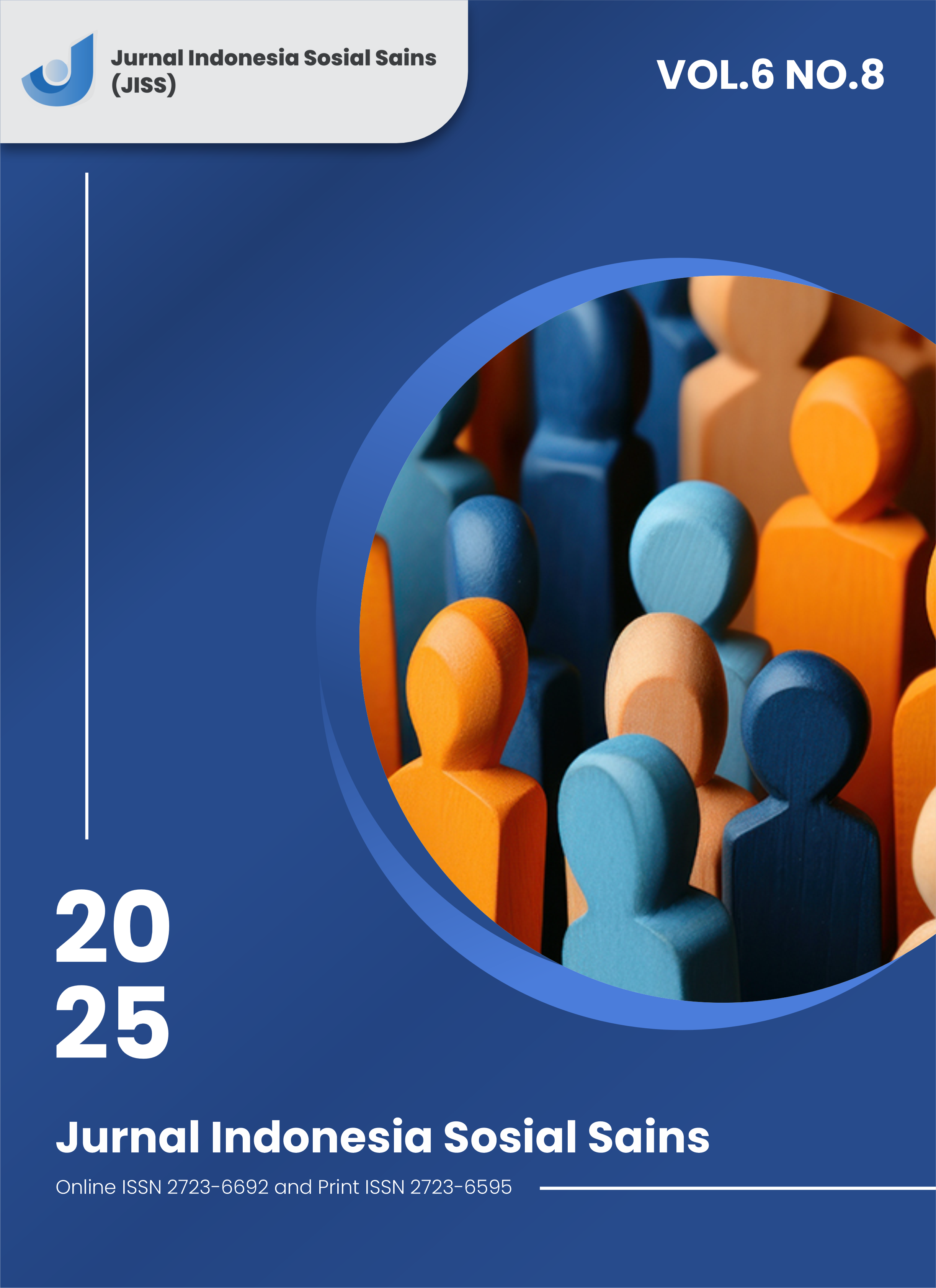The Effect of Implementing the 8p Digital Marketing Strategy on Purchase Intention for Bvlgari Luxury Perfumes: A Binary Logistic Regression Analysis
DOI:
https://doi.org/10.59141/jiss.v6i8.1836Keywords:
8P Digital Marketing, Luxury Perfume, Bvlgari, Purchase Intention,, Binary Logistic Regression.Abstract
This research examines the influence of the 8P digital marketing mix (Product, Price, Promotion, Place, People, Process, Physical Evidence, Productivity and Quality) on consumer purchase intention for Bvlgari luxury perfumes using binary logistic regression analysis. Data were collected via a Qualtrics survey from 88 respondents in Indonesia. The analysis revealed that among the 8P elements, Price, Public Figures (Promotion/People), and Product Collaboration significantly impacted purchase intention. Price and Public Figures had the strongest positive effects, increasing purchase likelihood by 3.8 and 4.8 times, respectively, aligning with theories of conspicuous consumption and aspirational influence. Conversely, Product Collaboration showed a significant negative effect, reducing purchase intention by 74%, suggesting potential brand dilution risks. Other elements, such as scent preferences and bottle design, were statistically insignificant. The logistic regression model achieved 68.2% overall accuracy, excelling in predicting intent-to-buy (91.7%) but underperforming for non-buyers (17.9%). These findings highlight the importance of premium pricing and influencer partnerships in luxury perfume marketing while cautioning against collaborations that may undermine brand exclusivity. The research provides actionable insights for Bvlgari to refine its digital strategy, emphasizing immersive, trust-driven experiences to offset the limitations of online sensory engagement.
References
Abdillah, M. D. (2023). Digital transformation in Indonesian MSMEs: Adoption, impact, and future directions. Eastasouth Proceeding of Economics and Business, 1(1), 44–55. https://asj.eastasouth-institute.com/index.php/epeb/article/view/44
Aaker, D. A., & Keller, K. L. (1990). Consumer evaluations of brand extensions. Journal of Marketing, 54(1), 27–41.
Chairunnisa, R., Zebua, Y., & Pitriyani, P. (2022). The influence of price perception, product quality, promotion, brand image on repurchase intention of Wardah lipstick products (research on customers of UD. Ghaisani Cosmetics Rantau Prapat). International Journal of Science, Technology & Management, 3(3), 754–762. https://doi.org/10.46729/ijstm.v3i3.513
Chen, C. (2024). Bvlgari's marketing strategies: From the perspective of 4P and SWOT analysis. Advances in Engineering Innovation. Diakses Juni 27, 2025, dari https://www.ewadirect.com/proceedings/aemps/article/view/19173/pdf
Hendrawan, E., Zakaria, D., Salwa, E., & Heikal, J. (2024). Customer renewal prediction for motor vehicle insurance using binary logistic regression in PT XYZ Insurance. Innovative: Journal of Social Science Research, 4(6), 2311–2320. https://doi.org/10.31004/innovative.v4i6.16478
Heikal, J. (2025). Analysis of factors influencing the decision to resubscribe to Spotify Premium using binary logistics regression method.
Jiménez-Marín, G. (2022). Application of sensory marketing techniques at Marengo. Sustainability, 14(12), 7351. https://doi.org/10.3390/su14127351
Kirmani, A., & Rao, A. R. (2000). No pain, no gain: A critical review of the literature on signaling unobservable product quality. Journal of Marketing, 64(2), 66–79.
Kusumawati, R. D., Oswari, T., Yusnitasari, T., Mittal, S., & Kumar, V. (2021). Impact of marketing-mix, culture and experience as moderator to purchase intention and purchase decision for online music product in Indonesia. International Journal of Business Innovation and Research, 25(4), 475–495.
Leibenstein, H. (1950). Bandwagon, snob, and Veblen effects in the theory of consumers' demand. The Quarterly Journal of Economics, 64(2), 183–207.
Lestari, A. P. (2024). E-commerce in Indonesia’s economic transformation and its influence on global trade. International Journal of Computer in Law & Political Science, 4(1), 10–23. https://ojs.unikom.ac.id/index.php/injucolpos/article/view/16616
McCracken, G. (1989). Who is the celebrity endorser? Cultural foundations of the endorsement process. Journal of Consumer Research, 16(3), 310–321.
Mordor Intelligence. (2025). Luxury perfume market trends, analysis & forecast (2025–2030). Mordor Intelligence. https://www.mordorintelligence.com/industry-reports/luxury-perfume-market
Murwani, I. A., Rooseno, E. D., Cakramihardja, A., & Widjaja, J. V. (2023). The impact of sensory marketing: Analysis of its attributes towards online perfume users’ behavior. International Journal of Professional Business Review, 8(4), e01973. https://doi.org/10.26668/businessreview/2023.v8i4.1973
Sanjaya, R., & Tarigan, J. (2009). Creative digital marketing. Elex Media Komputindo.
Schiffman, L. G., & Wisenblit, J. L. (2019). Consumer behavior (12th ed.). Pearson.
Suhendra, I. (2025). Influence of the digital economy on economic growth: Empirical study of a region in Indonesia. Cogent Economics & Finance, 13(1), 2457477. https://doi.org/10.1080/23322039.2025.2457477
Supdeluxe. (2025). Sensory marketing and luxury: The keys to success. Supdeluxe Luxury Insights. https://www.supdeluxe.com/en/luxury-news/sensory-marketing-and-luxury-keys-success
Trade.gov. (2024). Indonesia digital economy. International Trade Administration. https://www.trade.gov/country-commercial-guides/indonesia-digital-economy
Urde, M., Greyser, S. A., & Balmer, J. M. T. (2007). Corporate brands with a heritage. Journal of Brand Management, 15(1), 4–19.
Veblen, T. (1899). The theory of the leisure class: An economic research of institutions. Macmillan.
Wulandari, A., Hariandja, B., & Heikal, J. (2024). Identifying key drivers of repurchase intentions for Sari Roti product using binary logistics analysis.
Downloads
Published
How to Cite
Issue
Section
License
Copyright (c) 2025 Yudi Nugraha, Ricki Threezardi, Retno Dwirahmawati, Jerry Heikal

This work is licensed under a Creative Commons Attribution-ShareAlike 4.0 International License.
Authors who publish with this journal agree to the following terms:
- Authors retain copyright and grant the journal right of first publication with the work simultaneously licensed under a Creative Commons Attribution-ShareAlike 4.0 International. that allows others to share the work with an acknowledgement of the work's authorship and initial publication in this journal.
- Authors are able to enter into separate, additional contractual arrangements for the non-exclusive distribution of the journal's published version of the work (e.g., post it to an institutional repository or publish it in a book), with an acknowledgement of its initial publication in this journal.
- Authors are permitted and encouraged to post their work online (e.g., in institutional repositories or on their website) prior to and during the submission process, as it can lead to productive exchanges, as well as earlier and greater citation of published work.












